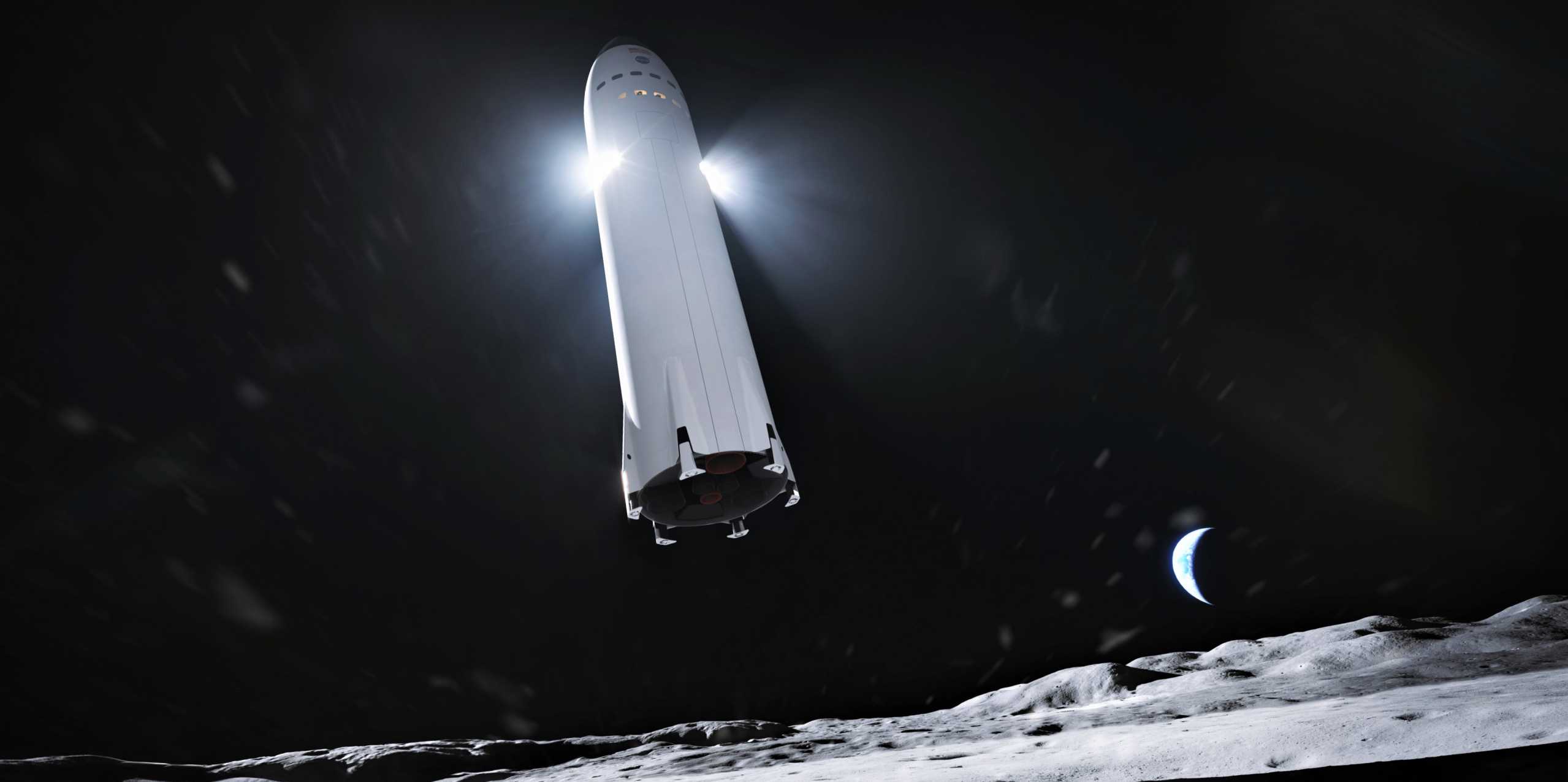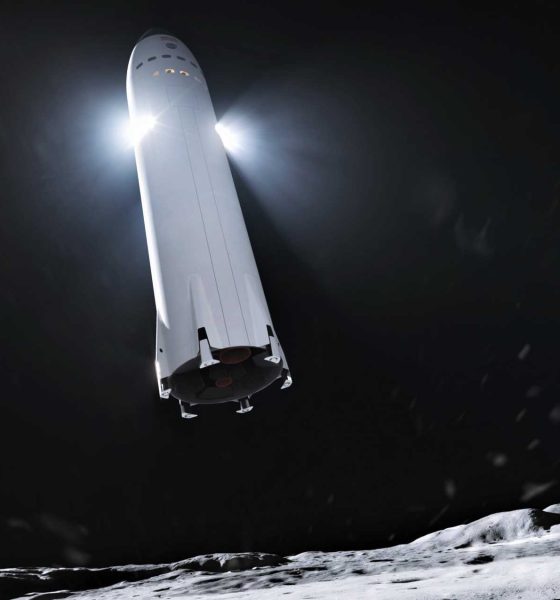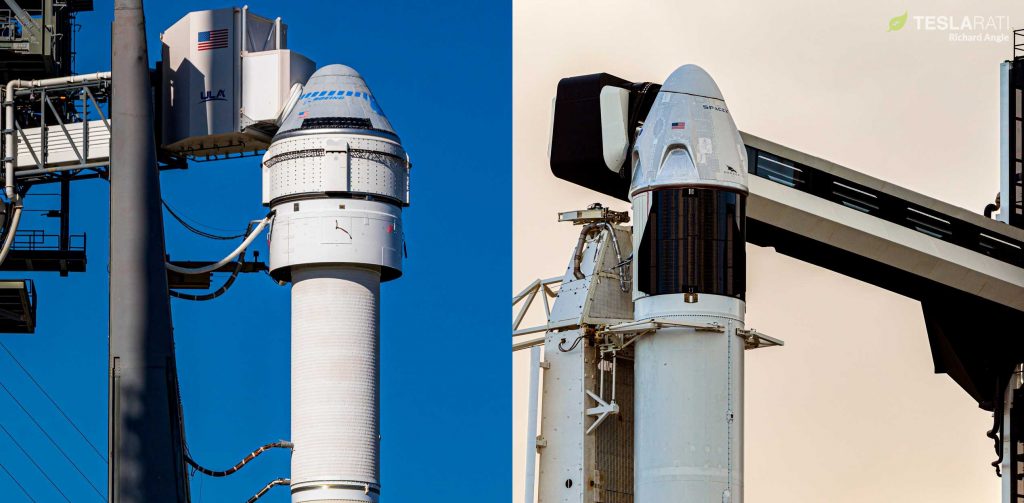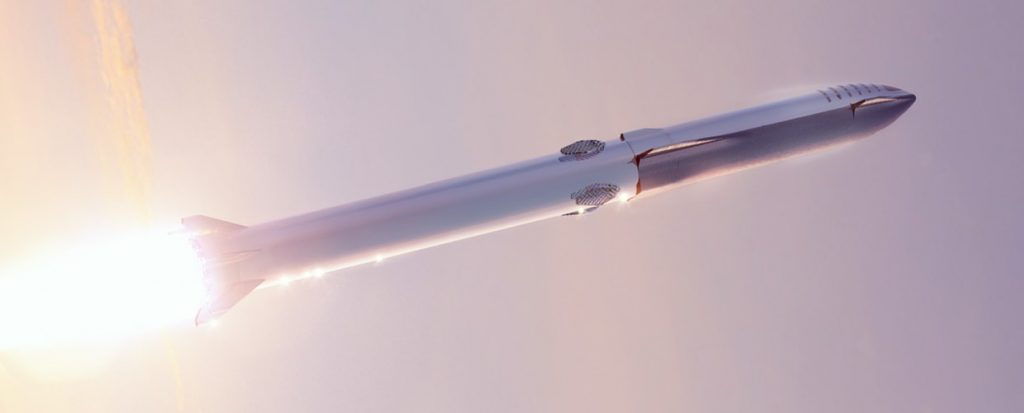

News
SpaceX Starship to land NASA astronauts on the Moon
SpaceX has won part of a new $1 billion NASA contract to create a custom version of Starship designed explicitly to send space agency astronauts and huge amounts of cargo to the Moon.
Incredibly, SpaceX won its Lunar Starship development contract alongside two others awarded by NASA – one to a Blue Origin-led coalition and the other to Dynetics and “more than 25 subcontractors”. Of the three, only SpaceX’s offering is a single-stage lunar lander, while Dynetics wants to build a two-stage lander and Blue Origin wants to build a three-stage lander. It also appears that SpaceX’s custom Starship is the only lander designed to be at least partially reusable, capable of flying “many times between the surface of the Moon and lunar orbit” according to the launch company.
While potentially very exciting, the fate of NASA’s triple-threat Moon lander contract award now rests almost entirely in the hands of Congress. As of today, NASA has committed almost $970 million to the three lunar landers it’s decided to develop, only part of which the space agency appears to have on hand and ready for dispersal. For the program to even begin to approach actual missions to the Moon, let alone astronaut landings, Congress will have to consistently raise NASA’s budget every year for at least the next five to six.
Even insofar as that required budget raise (roughly ~$3B per year) is only a 10-15% increase and is effectively a rounding error relative to the rest of the federal budget, military in particular, the odds that Congress will consistently and fully support it are not great. For example, the Commercial Crew Program (CCP) – set to attempt its inaugural astronaut launch next month – began in 2010 with the expectation it would cost around $7-8 billion and achieve its first crewed launch in 2015 or 2016.
From 2010 to 2015, Congress systematically underfunded the Commercial Crew Program for largely parochial reasons, preferring to put money into projects (typically the Space Launch System rocket, Orion spacecraft, and their launch facilities) that directly benefited their districts or states. Over half a decade, Congress supplied only 60% of the funds CCP had budgeted, a lack of resources that likely directly resulted in years of program delays. Notably, while both Boeing and SpaceX have run into significant technical hurdles and suffered their own technical delays, the companies would have almost certainly been able to discover those hurdles earlier on if they’d had the full CCP budget supporting them.

It’s entirely unclear whether NASA’s new Artemis Moon lander program will have a better or worse time than the Commercial Crew Program. The same parochial SLS/Orion/ground systems interests remain in full force in the US House and Senate and will likely not be pleased by the fact that only one of NASA’s three HLS awards could result in SLS launch contracts. Surprise winner Dynetics has proposed a lander that can launch on either SLS 1B or the United Launch Alliance (ULA) Vulcan Centaur rockets.
SpaceX’s Starship lander will unsurprisingly launch of its own Super Heavy rocket booster, while Blue Origin, Lockheed Martin, Northrup Grumman, and Draper’s lander will almost certainly launch on the former company’s New Glenn rocket.


Ultimately, this is the most significant acknowledgement and support SpaceX’s next-generation Starship rocket has ever received from NASA or the US federal government. Still, of the ~$970 million NASA has initially committed, Starship only received $135 million – nearly half as much as Dynetic received and more than four times less than Blue Origin’s award. NASA is thus clearly hinging its investment on SpaceX’s continued internal support for its next-generation, fully-reusable launch vehicle, as $135 million certainly isn’t enough for even SpaceX to build a building-sized rocket to land astronauts on the Moon.
Regardless, this is certainly one of the most intriguing possible outcomes of NASA’s Human Lander Systems contracts and should keep things very interesting – pending Congressional support – over the next several years.

News
Tesla FSD fleet is nearing 7 billion total miles, including 2.5 billion city miles
As can be seen on Tesla’s official FSD webpage, vehicles equipped with the system have now navigated over 6.99 billion miles.

Tesla’s Full Self-Driving (Supervised) fleet is closing in on almost 7 billion total miles driven, as per data posted by the company on its official FSD webpage.
These figures hint at the massive scale of data fueling Tesla’s rapid FSD improvements, which have been quite notable as of late.
FSD mileage milestones
As can be seen on Tesla’s official FSD webpage, vehicles equipped with the system have now navigated over 6.99 billion miles. Tesla owner and avid FSD tester Whole Mars Catalog also shared a screenshot indicating that from the nearly 7 billion miles traveled by the FSD fleet, more than 2.5 billion miles were driven inside cities.
City miles are particularly valuable for complex urban scenarios like unprotected turns, pedestrian interactions, and traffic lights. This is also the difference-maker for FSD, as only complex solutions, such as Waymo’s self-driving taxis, operate similarly on inner-city streets. And even then, incidents such as the San Francisco blackouts have proven challenging for sensor-rich vehicles like Waymos.
Tesla’s data edge
Tesla has a number of advantages in the autonomous vehicle sector, one of which is the size of its fleet and the number of vehicles training FSD on real-world roads. Tesla’s nearly 7 billion FSD miles then allow the company to roll out updates that make its vehicles behave like they are being driven by experienced drivers, even if they are operating on their own.
So notable are Tesla’s improvements to FSD that NVIDIA Director of Robotics Jim Fan, after experiencing FSD v14, noted that the system is the first AI that passes what he described as a “Physical Turing Test.”
“Despite knowing exactly how robot learning works, I still find it magical watching the steering wheel turn by itself. First it feels surreal, next it becomes routine. Then, like the smartphone, taking it away actively hurts. This is how humanity gets rewired and glued to god-like technologies,” Fan wrote in a post on X.
News
Tesla starts showing how FSD will change lives in Europe
Local officials tested the system on narrow country roads and were impressed by FSD’s smooth, human-like driving, with some calling the service a game-changer for everyday life in areas that are far from urban centers.

Tesla has launched Europe’s first public shuttle service using Full Self-Driving (Supervised) in the rural Eifelkreis Bitburg-Prüm region of Germany, demonstrating how the technology can restore independence and mobility for people who struggle with limited transport options.
Local officials tested the system on narrow country roads and were impressed by FSD’s smooth, human-like driving, with some calling the service a game-changer for everyday life in areas that are far from urban centers.
Officials see real impact on rural residents
Arzfeld Mayor Johannes Kuhl and District Administrator Andreas Kruppert personally tested the Tesla shuttle service. This allowed them to see just how well FSD navigated winding lanes and rural roads confidently. Kruppert said, “Autonomous driving sounds like science fiction to many, but we simply see here that it works totally well in rural regions too.” Kuhl, for his part, also noted that FSD “feels like a very experienced driver.”
The pilot complements the area’s “Citizen Bus” program, which provides on-demand rides for elderly residents who can no longer drive themselves. Tesla Europe shared a video of a demonstration of the service, highlighting how FSD gives people their freedom back, even in places where public transport is not as prevalent.
What the Ministry for Economic Affairs and Transport says
Rhineland-Palatinate’s Minister Daniela Schmitt supported the project, praising the collaboration that made this “first of its kind in Europe” possible. As per the ministry, the rural rollout for the service shows FSD’s potential beyond major cities, and it delivers tangible benefits like grocery runs, doctor visits, and social connections for isolated residents.
“Reliable and flexible mobility is especially vital in rural areas. With the launch of a shuttle service using self-driving vehicles (FSD supervised) by Tesla in the Eifelkreis Bitburg-Prüm, an innovative pilot project is now getting underway that complements local community bus services. It is the first project of its kind in Europe.
“The result is a real gain for rural mobility: greater accessibility, more flexibility and tangible benefits for everyday life. A strong signal for innovation, cooperation and future-oriented mobility beyond urban centers,” the ministry wrote in a LinkedIn post.
News
Tesla China quietly posts Robotaxi-related job listing
Tesla China is currently seeking a Low Voltage Electrical Engineer to work on circuit board design for the company’s autonomous vehicles.

Tesla has posted a new job listing in Shanghai explicitly tied to its Robotaxi program, fueling speculation that the company is preparing to launch its dedicated autonomous ride-hailing service in China.
As noted in the listing, Tesla China is currently seeking a Low Voltage Electrical Engineer to work on circuit board design for the company’s autonomous vehicles.
Robotaxi-specific role
The listing, which was shared on social media platform X by industry watcher @tslaming, suggested that Tesla China is looking to fill the role urgently. The job listing itself specifically mentions that the person hired for the role will be working on the Low Voltage Hardware team, which would design the circuit boards that would serve as the nervous system of the Robotaxi.
Key tasks for the role, as indicated in the job listing, include collaboration with PCB layout, firmware, mechanical, program management, and validation teams, among other responsibilities. The role is based in Shanghai.
China Robotaxi launch
China represents a massive potential market for robotaxis, with its dense urban centers and supportive policies in select cities. Tesla has limited permission to roll out FSD in the country, though despite this, its vehicles have been hailed as among the best in the market when it comes to autonomous features. So far, at least, it appears that China supports Tesla’s FSD and Robotaxi rollout.
This was hinted at in November, when Tesla brought the Cybercab to the 8th China International Import Expo (CIIE) in Shanghai, marking the first time that the autonomous two-seater was brought to the Asia-Pacific region. The vehicle, despite not having a release date in China, received a significant amount of interest among the event’s attendees.








